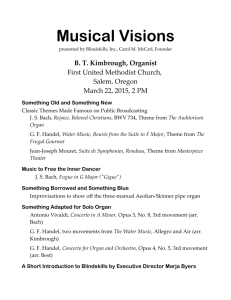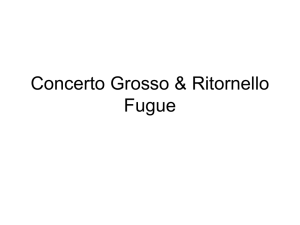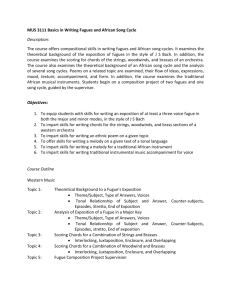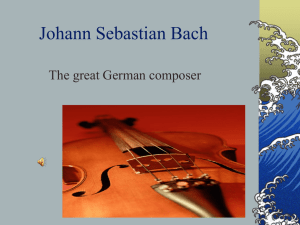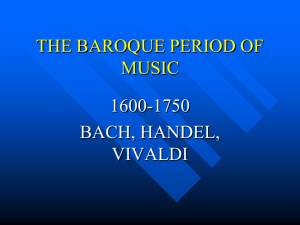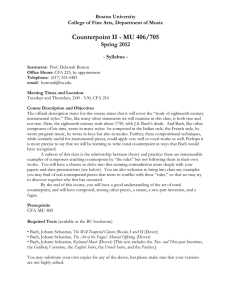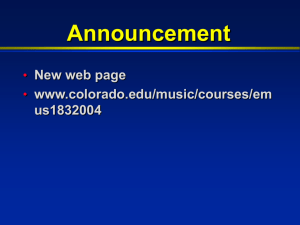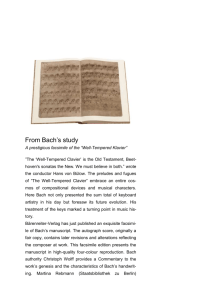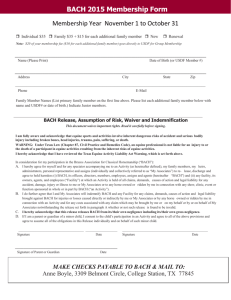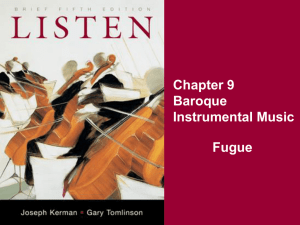Johann Sebastian Bach
advertisement
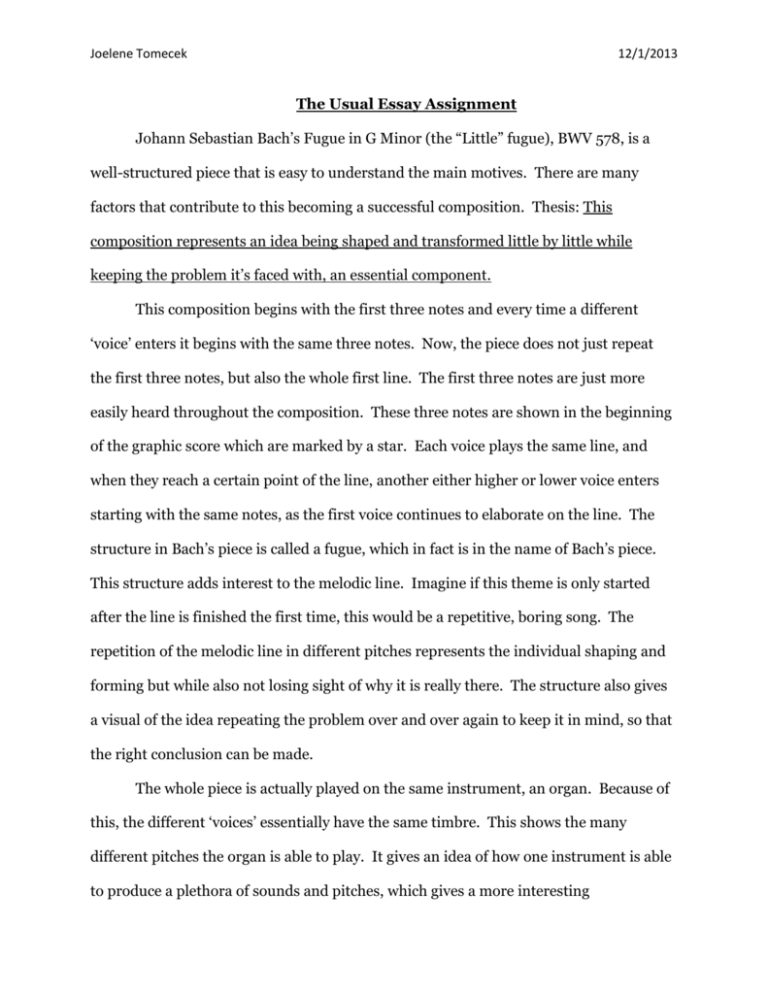
Joelene Tomecek 12/1/2013 The Usual Essay Assignment Johann Sebastian Bach’s Fugue in G Minor (the “Little” fugue), BWV 578, is a well-structured piece that is easy to understand the main motives. There are many factors that contribute to this becoming a successful composition. Thesis: This composition represents an idea being shaped and transformed little by little while keeping the problem it’s faced with, an essential component. This composition begins with the first three notes and every time a different ‘voice’ enters it begins with the same three notes. Now, the piece does not just repeat the first three notes, but also the whole first line. The first three notes are just more easily heard throughout the composition. These three notes are shown in the beginning of the graphic score which are marked by a star. Each voice plays the same line, and when they reach a certain point of the line, another either higher or lower voice enters starting with the same notes, as the first voice continues to elaborate on the line. The structure in Bach’s piece is called a fugue, which in fact is in the name of Bach’s piece. This structure adds interest to the melodic line. Imagine if this theme is only started after the line is finished the first time, this would be a repetitive, boring song. The repetition of the melodic line in different pitches represents the individual shaping and forming but while also not losing sight of why it is really there. The structure also gives a visual of the idea repeating the problem over and over again to keep it in mind, so that the right conclusion can be made. The whole piece is actually played on the same instrument, an organ. Because of this, the different ‘voices’ essentially have the same timbre. This shows the many different pitches the organ is able to play. It gives an idea of how one instrument is able to produce a plethora of sounds and pitches, which gives a more interesting Joelene Tomecek 12/1/2013 composition. If the same melodic line was being played by the same pitch at different times, the composition would not be as successful. By the composition having the same timbre and using the same instrument, it supports the thesis by being an idea keeping its focus on one problem. Having one timbre represents one idea. Even with the same instrument being used, the pitches vary greatly due to the wide range of the organ. The piece in the beginning starts with a high voice and overlaps with a lower voice. The voices keep going lower and lower until the lowest range of the organ is played. By this happening, the idea is growing and shaping to be stronger which is shown by the lower stronger voices. A few times during the piece, the main motive transitions into something different than the motive everyone is used to hearing. This is what proves the idea is being changed and shaped. The transition point at the second star in the graphic score is a moment of transformation in the piece. This adds variety to the piece as well as supports the idea trying to resolve the problem by trying a different ‘outcome’ other than the same melodic line that has consistently be heard. There is another one of these points at the end of the piece which enables the idea to have resolved the situation. The last star on the graphic score reveals the beginning of resolution of the problem. Bach’s Fugue in G Minor is an interesting composition, that even through the use of repetition, does not become old and boring. All the factors in Bach’s composition that make it interesting are the same ones that support the thesis of an idea growing and resolving itself to an end. The thesis is supported by the fugue structure, the different pitches, the transition and conclusion of the composition, and the timbre being the same. Joelene Tomecek 12/1/2013 Graphic Score Picture: Joelene Tomecek 12/1/2013 Reference: 1. “Johann Sebastian Bach - ''Little'' Fugue in G minor, BMV 578,” YouTube video, 4:07, from Sony classical – Great Performances, 1903-1998 by various artists, posted by “LuwiDa2nd,” October 13, 2009, http://www.youtube.com/watch?v=zO8i5D2uz84.
